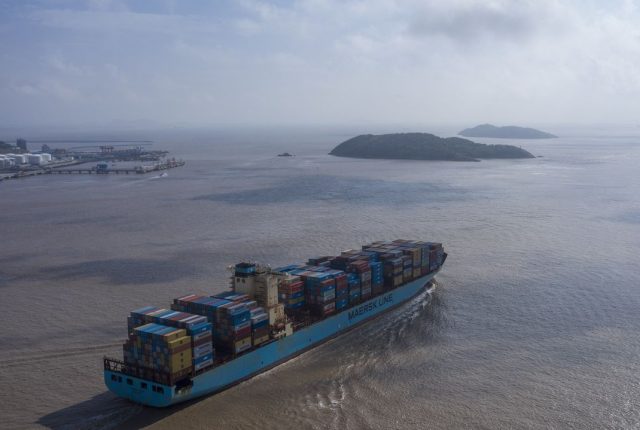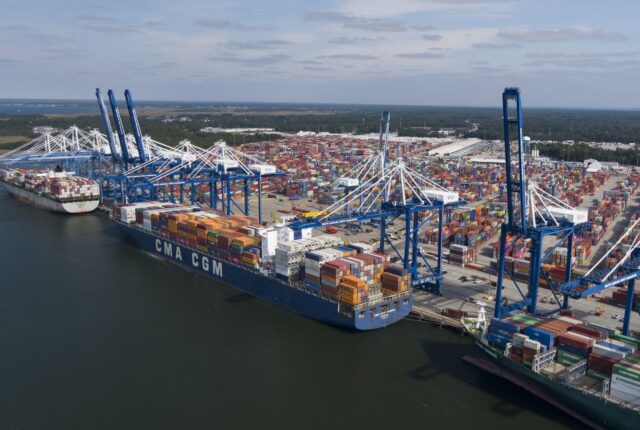
Shipping and Logistics Costs Are Expected to Keep Rising in 2022
Companies are bracing for more steep increases in shipping and logistics prices next year after supply-chain costs soared in the scramble to move goods during the Covid-19 pandemic.
Transportation and logistics providers are seeking big boosts in prices for contracts for the coming year, signaling that the inflationary pressure driven by strong demand and tight capacity in freight markets is likely to persist.
With high shipping demand still far outweighing tight capacity across the freight sector, industry experts say transport operators have leverage to raise prices when negotiating new contracts. Ocean-shipping executives say they expect the rates set in many annual contracts will double compared with agreements struck earlier this year, before supply-chain bottlenecks squeezed capacity. Some trucking companies project double-digit growth in contract rates for 2022.
Prices have been rising across the freight sector, including in parcel delivery, trucking, ocean shipping and warehousing. Most freight-transportation contracts are negotiated annually, although many large shippers may have multiyear agreements with a variety of carriers.
“I think folks are a little shell-shocked at the moment,” said Todd Bulmash, a logistics executive and board member at the Council of Supply Chain Management Professionals. “They’re preparing for the worst.”
Pricing in most freight transport and logistics markets generally slides between largely stable long-term contract rates and spot-market pricing that is more sensitive to shifts in demand and the availability of capacity. Prices in spot markets for ocean shipping, trucking and other logistics services have escalated sharply this year.
Overall, domestic shipping rates for moving goods by road and rail in the U.S. are up about 23% this year from 2020, according to Cass Information Systems Inc., which handles freight payments for companies.
A separate measure in the Logistics Managers’ Index that tracks overall logistics prices, including transportation, warehousing and inventory prices, reached a record in November, up 3.4% from October and a 14% increase year-over-year. The index was launched in 2016.
Trucking companies and other logistics firms note their own higher costs, including rising salaries as they have sought workers in a tight labor market.
“As long as we have underlying inflation across the economy, you’re going to see that inflation reflected in the cost of goods and services to include trucking,” said Derek Leathers, chief executive of Omaha, Neb.-based truckload carrier Werner Enterprises Inc.
Mr. Leathers, who said contract rates could rise by high single-digit to mid-double-digit percentages in 2022, expects price increases to moderate as transportation demand eases and companies finish replenishing depleted inventories. However, he said, “We don’t foresee that until 2023. All of 2022 we view as a capacity-constrained market with inflationary pressure and with significant equipment disruptions.”
The parcel-shipping prices that are closest to consumers are rising at the fastest pace in nearly a decade as pandemic-driven demand shifts pricing power to carriers that deliver packages to homes and businesses. Delivery giants FedEx Corp. and United Parcel Service Inc. both said rates would go up an average of 5.9% next year across most services, the first time in eight years that either company had annual increases above 4.9%.
Prices to ship sea containers are likely to reach records under annual contracts that are usually negotiated early in the year for the peak shipping season, according to Xeneta, a Norway-based transportation data and procurement specialist.
Xeneta said the spot price to ship a 40-foot container from Shanghai to Los Angeles earlier this month was 75% higher than the same time last year. Carriers “go into contract negotiations right now holding the lion’s share of the aces,” said Peter Sand, Xeneta’s chief analyst.
Seko Logistics, an Itasca, Ill.-based freight forwarder, says its contracted rate to ship a 40-foot container from Asia to the U.S. West Coast could double next year to between $6,500 and $7,000. In 2019, the firm paid ocean carriers about $1,500 for the same service.
“The carriers are fully in control and the rest of us are sitting on our hands waiting for the carriers to tell us what to do,” said Craig Grossgart, senior vice president of global ocean freight for Seko.
Gordon Downes, chief executive of New York Shipping Exchange Inc., which monitors and enforces ocean contracts, said talks between some carriers and customers have already started, rather than waiting until the new year, because shippers who waited to the last minute during the last negotiating period found carriers had already run out of space.
In trucking, the outlook for higher rates next year follows a sharp run-up in the contract prices that businesses negotiate with trucking companies and freight brokers. Last month the average contract rate reached a record $2.51 per mile excluding fuel surcharge, according to online freight marketplace DAT Solutions LLC.
To avoid competing for scarce trucking capacity on the open market, some retailers and manufacturers are rolling over existing contracts with carriers for 2022 in exchange for moderate price increases, said Chris Caplice, chief scientist at DAT and executive director of the Massachusetts Institute of Technology’s Center for Transportation and Logistics. “If you go out to bid, you can expect your rates will be 10% to 15% higher, on average,” Dr. Caplice said.
The cost of storing goods is also set to rise more quickly as warehouse labor costs are increasing and facility owners seek price increases to replace expiring leases that had allowed companies to sidestep sharply rising rents during 2021.
Prices to lease industrial properties have jumped 25% on average nationwide over rates tenants paid at the end of five-year leases that expired in the third quarter, real-estate firm CBRE Group Inc. said in early December.
Landlords are even reluctant to agree to new long-term leases that bake in the current market rates, reasoning that tight capacity will lead to rising prices in the coming years, said Carolyn Salzer, head of industrial and logistics research in the Americas at real-estate firm Cushman & Wakefield. “Five years down the road rents are going to be higher,” she said. “So it’s in the better interest of the investor owners to do a short-term lease right now.”
Third-party logistics operators that provide outsourced distribution and fulfillment services are also passing higher labor costs on to their customers as competition for warehouse workers boosts wages.
Shippers are trying various ways to keep the transportation inflation at bay, such as consolidating more loads to minimize truck trips and renting truck trailers for storage rather than paying rising warehousing rents.
But experts say companies have little choice other than absorbing the cost or passing it along to their customers.
Overall, transportation rarely exceeds more than 7% of the cost of goods being shipped, said Satish Jindel, president of SJ Consulting Group Inc. For most companies, “the value of the product you’re selling and the importance of that sale is much greater than a slight increase in transportation costs,” Mr. Jindel said. “You don’t want to say you lost a sale because you were trying to find a cheaper way of getting it there.”
Source-https://www.wsj.com/articles/shipping-and-logistics-costs-are-expected-to-keep-rising-in-2022-11639918804
Related posts
Ship Backup Off Port of Charleston Swells to 30 Vessels
Lorem ipsum dolor sit amet, consectetur adipiscing elit. In augue ligula, feugia
Fak world wide Blog
Lorem ipsum dolor sit amet, consectetur adipiscing elit. In augue ligula, feugia
Next Threat to Prices: A Surge in Costs to Ship Products
Lorem ipsum dolor sit amet, consectetur adipiscing elit. In augue ligula, feugia




Leave a Reply